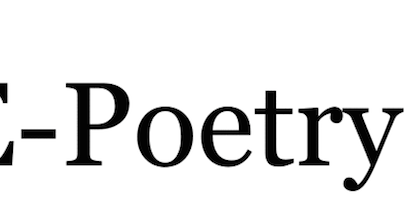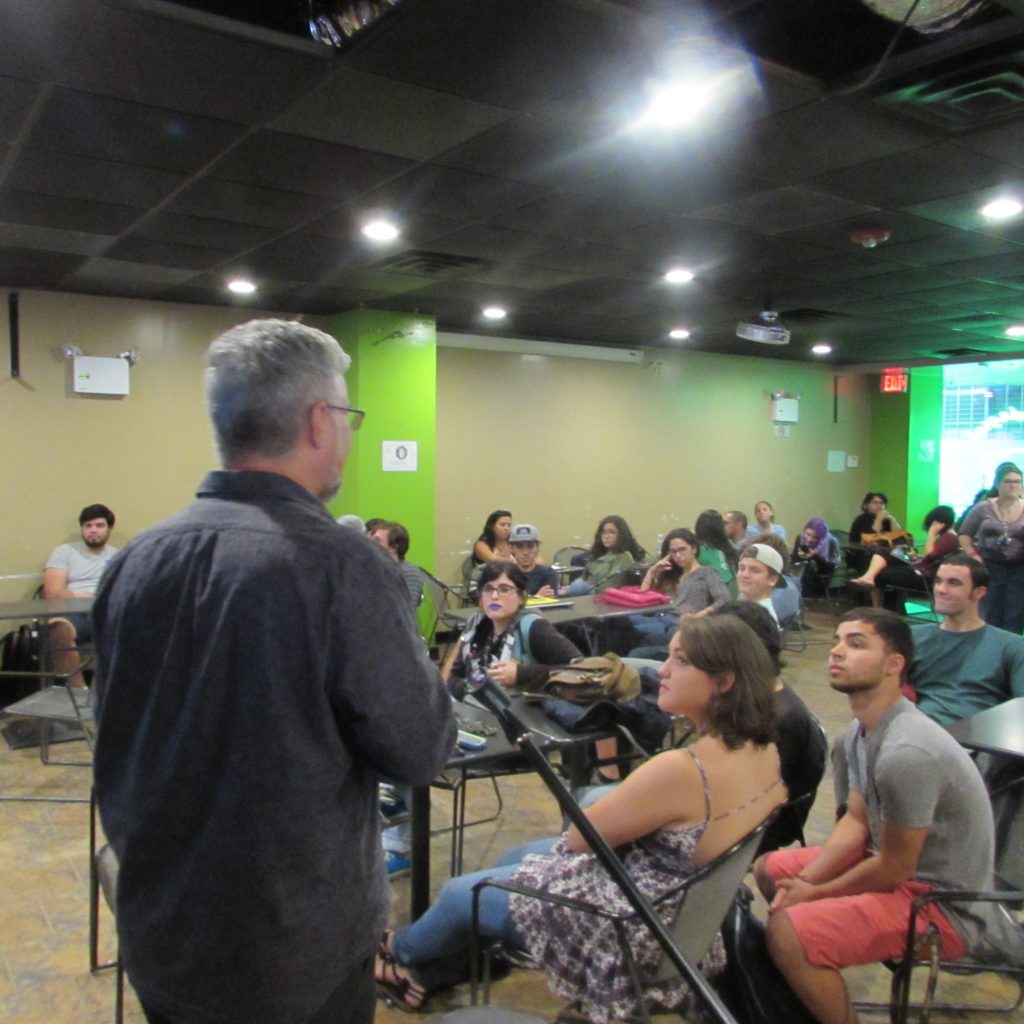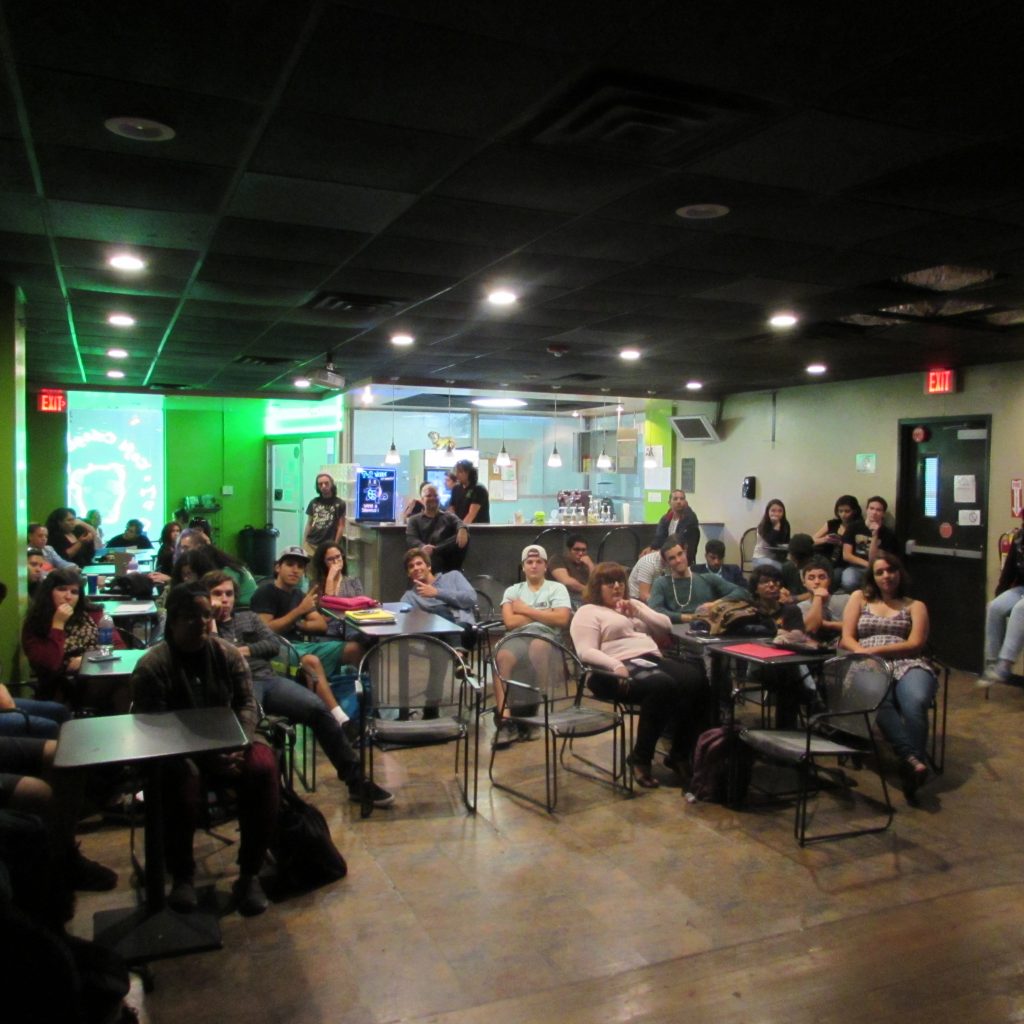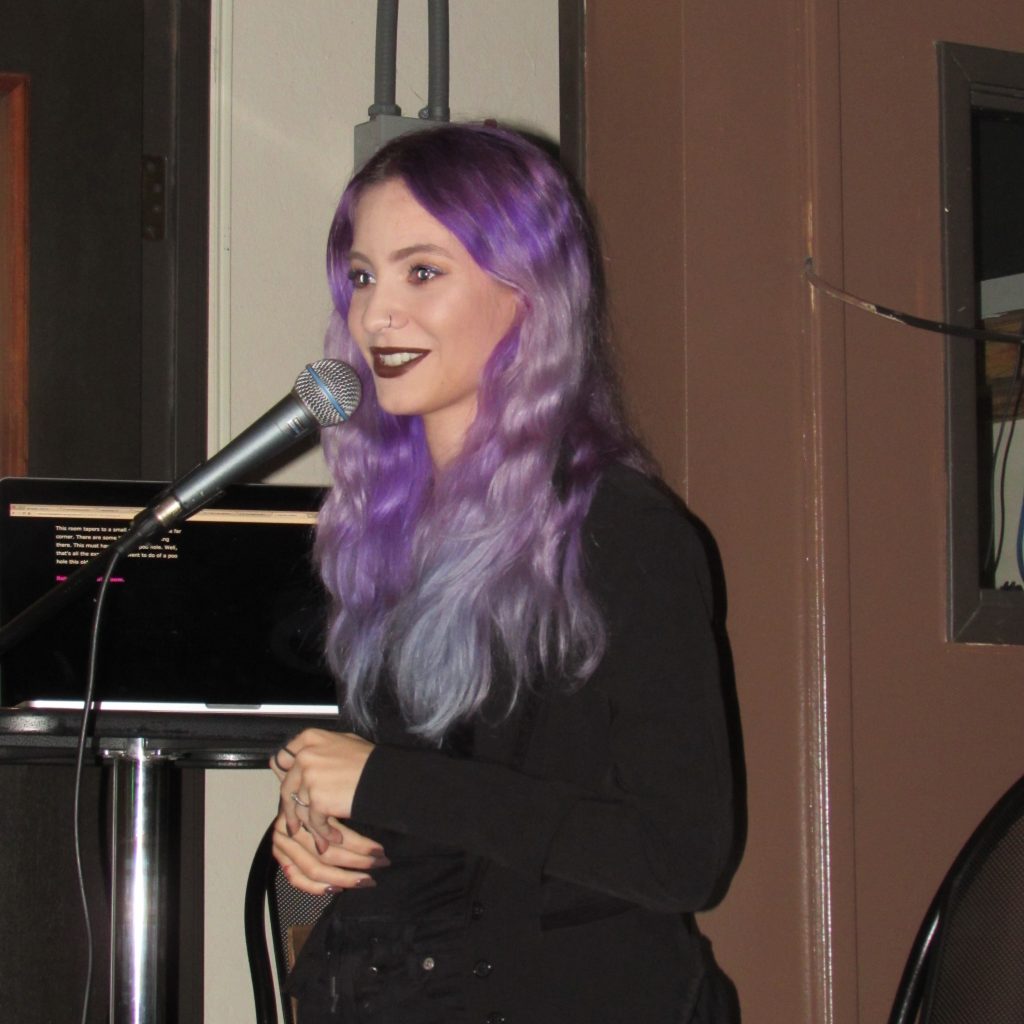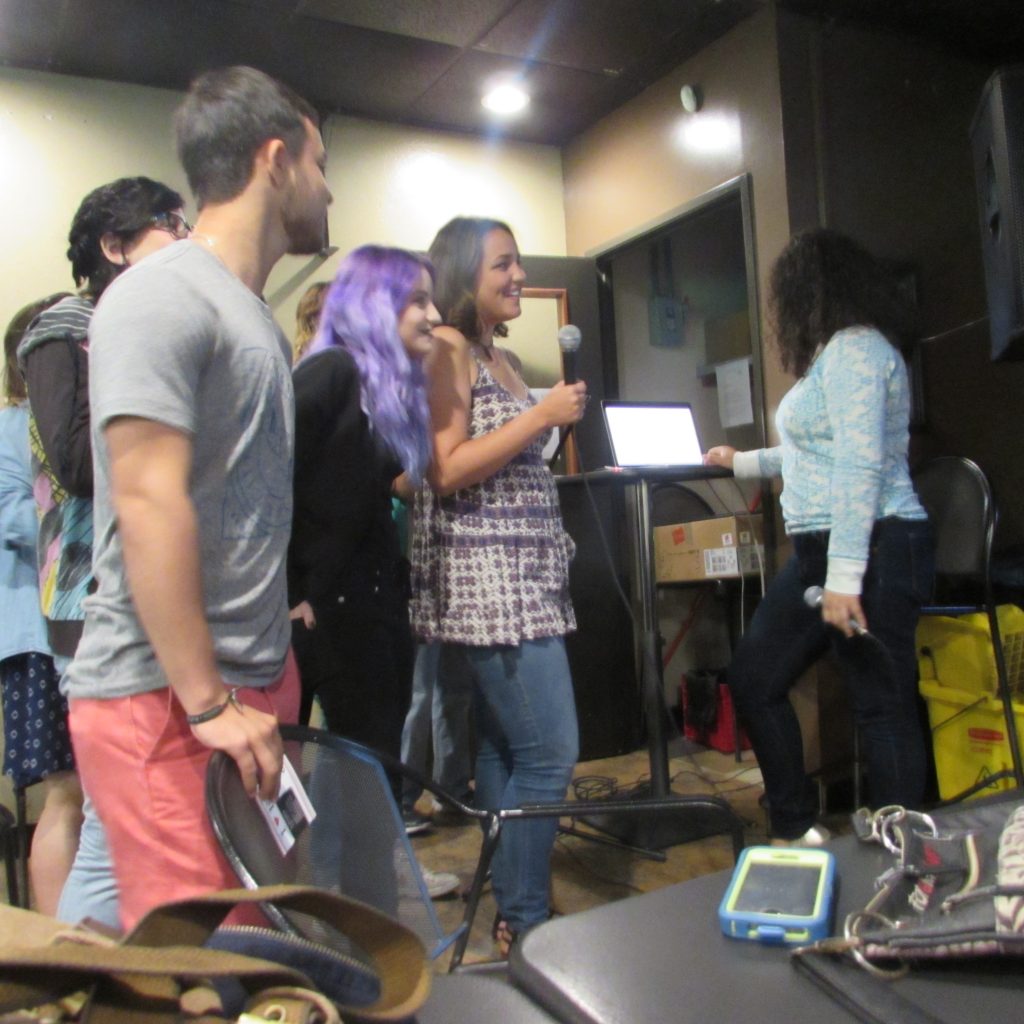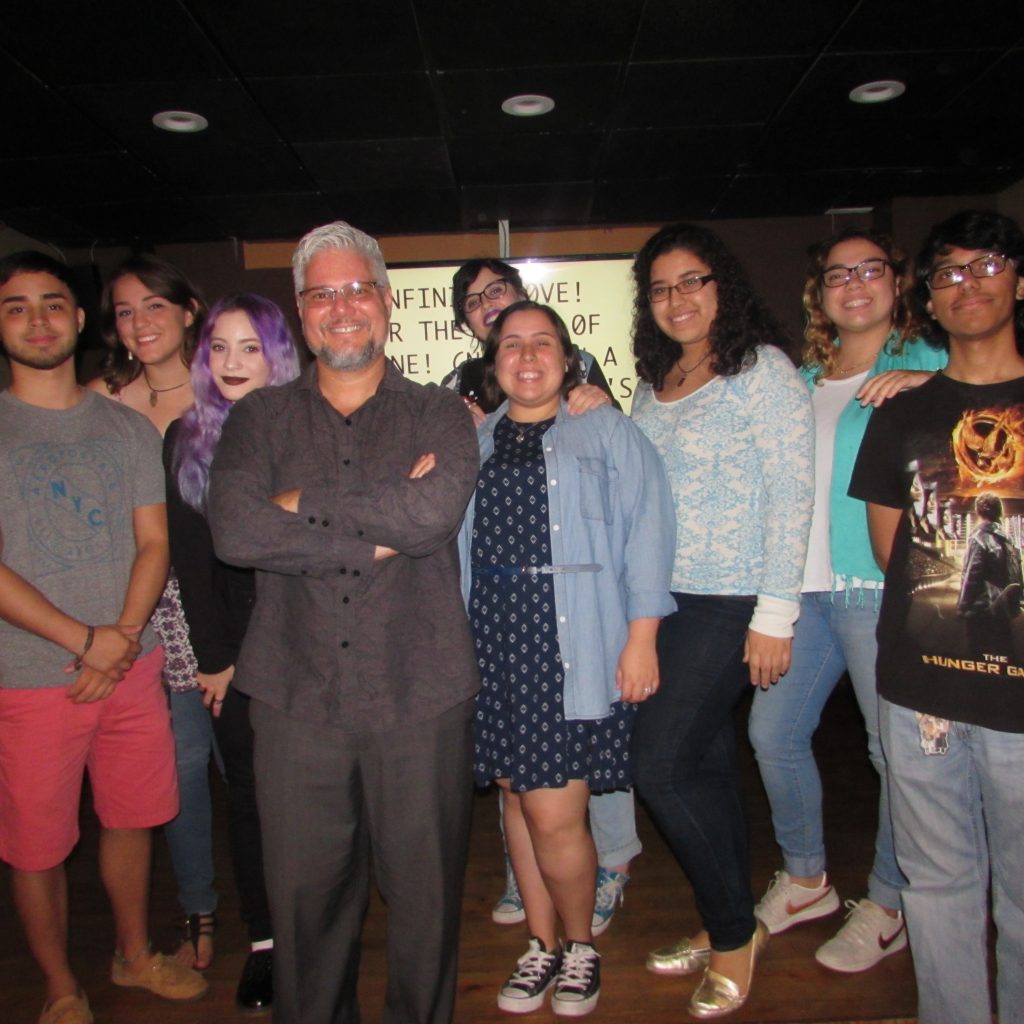Monday, May 3rd marked the beginning of a new era for poetry at La Cueva de Tarzán. Dr. Leonardo Flores’s Digital Humanities interns launched the first ever I ♥︎ E-Poetry Café, an event that celebrated electronic poetry, the intersection between poetry and technology. Over the course of the night, students from Dr. Flores’ Digital Creative Writing class and his Digital Humanities Internship presented original works and from the Electronic Literature Collection: Volume 3, respectively.
By six in the afternoon, crowds of students were gathered at La Cueva, eager to explore this innovative poetry. Before any student performed, Dr. Flores defined electronic literature (his research area), highlighting its outstanding potential for literary creation.
As people sipped from their beverages of choice, the presentations kicked off with an original work by Karen Sedik. Among the different types of electronic poetry that were presented that night were kinetic typography, or which is an animation-based writing technique that mixes motion and text to express ideas, Twitter bots, which are defined as “computer programs designed to operate autonomously, performing scheduled, responsive, or real-time operations in a computer, through the Internet, and/or on social media networks,” and Twine games, which are programs that allow anyone to generate interactive stories and games.
The students took turns presenting pieces. These ranged from Christian Keough’s twine “Journey Through the Force,” based on the Star Wars universe, to Carlos Carrero’s creepy Webyarn Remix, entitled “Soul Keeper,” a chilling exploration on photography; students presented their pieces and left the audience awestruck at the kind of possibilities that digital interfaces could grant them. Keishly Hernández stepped up the game with an interactive Twine game by Anna Anthropy named “The Hunt for the Gay Planet“, which engaged students in exploring planets until they achieved their goal of finding the queerest planet in the cosmos.
A night like this left a promising mark on the future direction of poetry, showed students its newest form, and ignited hope that more events like these could take place in the near future.
You can see some photos from the event below:
- Dr. Flores highlighting the importance of the Digital Humanities today
- The place was packed!
- Keishly Hernández presenting “The Hunt for the Gay Planet” by Auntie Pixelante
- Some interns presenting bots from Twitter
- The DH Interns with Dr. Flores

